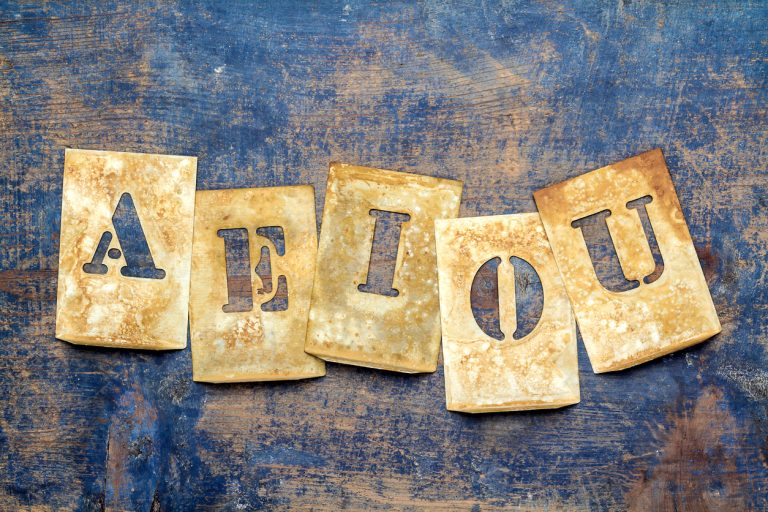Sing Your “Cake” and Eat it, Too! (Part Two)
Hello! If you’re just joining me with this current post, you may want to go back and read Part One of this series:
https://singingvoicesuccess.com/2018/07/08/sing-your-cake-and-eat-it-too-part-one/.
But if you’ve already read Part One, you have hopefully been “tasting” the first layer of our vocal technique cake: singing your song only on “Ah”, with two fingertips stacked one on the other as a bite block between your back teeth (NEVER use foreign objects in your mouth!). To recap, we are doing this to overcome our tense speech habits, which really get in the way of our vocal production.
By working on this first layer of the cake, you will achieve several important things in your singing:
1. Vertical space for the voice. Drop your jaw and tongue into a relaxed “duh” position. This lowers the larynx (voice box), lengthens the resonating tube (your throat), and opens up more space in your oral cavity (through the mouth into the head). All of this leads to a freer, improved sound!
2. A released tongue. Feel the tongue resting on the floor of the mouth, with the tip over your lower teeth, just glancing your lower inside lip. This alleviates tongue tension at the base of the tongue, where it attaches to your larynx. It also opens up more resonating (vibrating) space in the throat.
3. Palatal Lift. When you inhale, it should feel like an “umbrella” is opening inside your head, like the beginning of a yawn— this is the back part of the roof of your mouth, the soft palate. When it lifts, all sorts of good things happen to your voice! (to be discussed in depth in another post).
4. Consistent legato. This is how your vocal instrument moves from note to note. It should be smooth, with no sensation in the throat. You feel like you are floating/gliding down the river of air that is moving out of your mouth.
5. Consistent vowel quality. Does the “Ah” sound like the same vowel all the way through the song? If not, you’ve got some tension and/or manipulation issues. Keep listening closely and thinking of the sound you want to make, and it will improve.
6. Consistent vibrato (if you have some already). This is the natural “shimmer’ or vibration that occurs in a healthy, well-developed voice, that slight undulation or wavering in the sound. We want it to be lovely and even across all your vocal production, not going in and out willy-nilly. But, if you don’t have any vibrato right now, don’t stress! Just let your straight tone be consistent instead. You may also want to check out my recent post on vibrato as well:
So— now that you’ve been reminded of (or introduced to) what you want to achieve while singing “Ah”, we need to start moving up the layers of the cake. The crux of this entire exercise is not to lose any of the previous six qualities that you achieved on “Ah” as we start adding back all the things you have to do to actually sing the song on the lyrics. Here we go…!
Layer #2 of the Cake:
Now, with your fingertips still between your back molars, and still looking in the mirror, sing the actual vowels that occur in the words of your song. What do I mean? Here’s a sample. Let’s say you had to sing the first line of “The Star-Spangled Banner”:
Oh say can you see by the dawn’s early light…
The vowels alone would be:
Oh Ay Aa (sounds like cat) Oo Ee AhE Uh Aw U(sounds like book) Ee AhE
You would want those vowels to flow one into another without any interruption, or any sensation in your throat. Don’t let the changing vowels stop up your airflow! It should feel just as legato (smooth and connected) as when you were just singing “Ah”. Also, make sure of your vowel integrity— does each vowel sound like it really would in the word normally? If not, keep practicing!
Every layer of the cake needs multiple repetitions for success. And remember, this layer of the cake, the chain of flowing vowels, makes up about 99% of your total singing sound! So, its worth it to take your time before moving to the next layer. (By the way, I have a great post about how to sing “The Star Spangled Banner”. Check it out here:
https://singingvoicesuccess.com/2018/06/24/oh-say-can-you-sing-the-star-bangled-banner/
Layer #3 of the Cake
Congrats— you’re making progress! You’ve successfully ironed-out much of your technique while singing “Ah”, and you’ve carried all your good habits into singing the actual vowels in your song. Now comes the “fun”part, and I’m afraid I’m being a little sarcastic…
Now you have to add back the consonants, singing the words with those two fingertips still wedged in between your back teeth, and in front of the mirror. It’s going to be a bit awkward! But, as you sing complete words, keeping that jaw open in the back will reduce and relax your biting reflex, and transfer much of the work of saying the consonants to the tip of your tongue and lips, and into the facial muscles around your mouth. This has many benefits to your singing! It will help draw the vocal air stream forward, improve the focus of the voice, and give you much clearer diction, so that your audience will understand every word you sing. This will relieve undue pressure in the vocal mechanism and throat as well, and take your singing to a whole new level. You might feel weird, it might sound strange, and you may even drool (relaxing muscles in your vocal tract stimulate the production of saliva). Grab a tissue and keep going! You are setting yourself up for a much more opened-up and dynamic voice!
Layer #4 of the Cake
Whew! This is a lot of work, right? But singers who take the time to do all of this improve so much faster than those who don’t! Now you get some reward for your efforts. Take your fingers out, and sing your song on the words looking into the mirror. You should notice that everything is much more relaxed and vertical, more open. Your lips, tip of the tongue and facial muscles should be much more active as well. You almost look like a ventriloquist’s dummy, with that lower jaw really dropping every time you say a vowel. And remember, the tongue goes down with the jaw on vowels, but of course, don’t be afraid to move it when you have to say a consonant that involves your tongue. You don’t want to get locked into one position or be uncomfortable!
Layer #5 of the Cake– The Top!
Yay!!! You’ve made it to the top! Now you get to lose the mirror, and just SING! No fingers, no mirror— just FEEL how much more open you are, and how much more fluid the voice is, without getting tangled up in your throat muscles or the pronunciation of your words. Woo-hoo!!!
Remember, if you carefully work the plan, the plan will work for you. It’s applicable to any song of any style, and you can use it your whole life in singing. Most importantly, don’t rush the process. If you need to stay on one layer for awhile, DO! Repetition with correction is your friend. You may need to hang out on a certain layer for awhile, until you master the challenges of that particular level. By peeling away the layers of your singing to the most fundamental layer, and then slowly and methodically building it back up again, you will enjoy your best singing ever– today and for all your singing days to come…
Now, go get a cup of your favorite coffee and eat a piece of REAL cake– you deserve it!








I love this post! It’s a quick way to refresh my memory on the good technique that I’ve worked on in singing lessons.